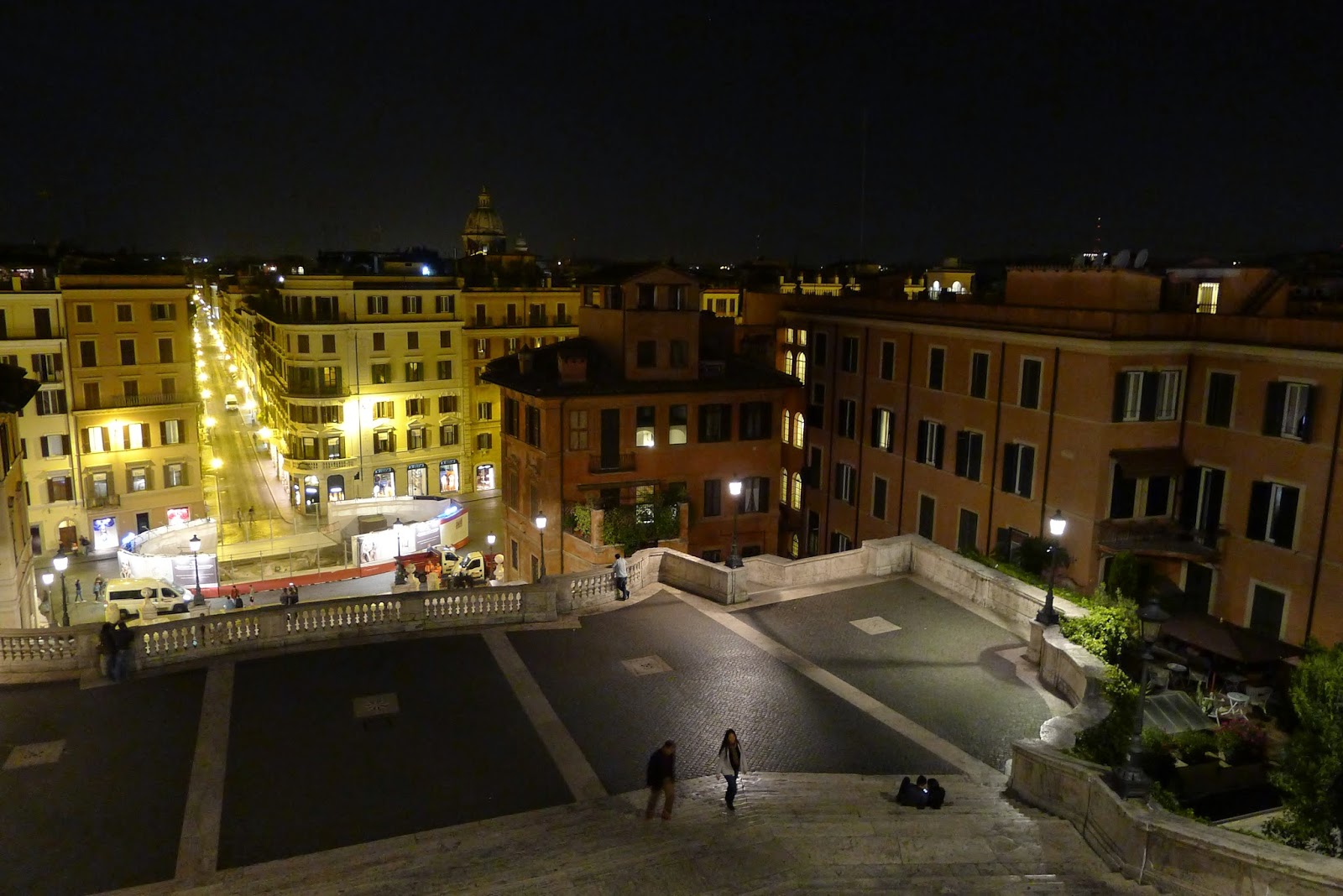We arrived from Amsterdam at the airport in search for the Leonardo da Vinci express train that will take us to our flat in the Pantheon neighborhood of Rome. I haven't quite gotten my bearings, much less warmed up my "Italian for Infants" so we stood around at the train platform for a few minutes, staring at a parked unmarked train wondering if this is THE train, searching for clues that might give us the needed confidence to hop on. The confidence didn't come. If it did, it did not come fast enough. The train had already left.
I rushed to one of the open tabacs. I had used my Spanish at the counter just minutes ago to confirm we had the right tickets and I was betting on it again. But before I had the chance to, the skies had already opened up. A Filipina, living in Roma now and returning from a long weekend in Switzerland with her husband, came to my rescue. Not my English, Italian or Spanish saved me. My Tagalog did.
She took us to the right train and lucky for us, she was taking the same train and even getting off at the same stop. I love this bayanihan (fraternity) among Filipinos everywhere in the world. I don't know what it is, but without an uttered word, we could tell if one's Filipino and we immediately form a bond. When we got to our stop, our newfound friend insisted to walk us to the correct bus we need to take to our apartment. We soon realized another Filipina was on board the bus so both ladies contrived to make sure we got off at the right stop. Mabuhay and Pilipino!
Rome was love at first sight. Rome is often compared to another great European capital, Paris, and I have to say, although I love Paris with all of my heart, Rome gets this one. Especially on that spring night, when the entire city softly glows, shadows are cast. It was quiet. Most of the tourists have retired to their hotel bed. The Eternal City was ours.
Fori di Augusto
Rome was the heart of the ancient and fascinating empire that spanned Europe and all the way east to what is now Iraq. Due in part of its sophisticated engineering of aqueducts, it was able to support its population at its heyday of 1.2 million. This empire, led militarily and politically by Emperors, became the first superpower in the world. Much of that glory remains visible today at the Roman Forum, the Coloseum, Palatine Hill, etc.
Augustus Caesar was the Roman emperor at the height of Pax Romana or the empire's 200 years of peace and prosperity. He succeeded Julius Caesar (not without a fight) after Julius was stabbed to death. Fori di Augusto was erected by Augustus as a tribute to Caesar. What remains today is only rubble, mere remnants of pillars and walls. It is hard to imagine its palatial grandeur 2,000 years ago, but with the help of visual reconstructions by way of light show, animation, and narration, we were able to acquire a better grasp of this piece of world history. "Forum of Augustus: 2,000 Years Later" runs every night through September 2014. You sit on bleachers listening to an excellent narration on noise-cancelling headsets as the reconstruction is projected right at the ruins. If you are planning a visit to Rome this summer and have 40 minutes to spare, this is worth your 15 euros. Tickets are available online here.
The Pantheon
The Pantheon was built during Pax Romana and it is astounding how it is still intact today, almost 2000 years later. It is now a church, St. Mary of the Martyrs, and inside is the tomb of Italian artist, Raphael.
Fontana di Trevi
I'd like to test the theory that your return to Rome does not depend on a coin tossed into the fountain. If The Dutch and I somehow manage to come back, then we know it cannot be attributed to the coin-tossing.
Piazza Navona
Piazza di Spagna & the Spanish Steps
It was so quiet, almost solemn, to be in the thick of Rome without elbowing the throng of tourists for that money shot. Roma is best at night, I'm convinced.
Il Vitoriano
If you look at the center, at the top of the steps, there are two guards on either side of a wreath. That tells you just how colossal it is. It is a monument to the first king of Italy, Vittorio Emanuele II, which is also a celebration of the unification of Italy.
Water Fountains all Over Roma
The Alleyways of Roma
I did not think I would love Roma as much as I did. I was wary in the beginning because they warn of pickpockets at every turn and lecherous Italians lurking about sleazily murmuring "Ciao, bella". It is a big city and for sure, it will be dirty.
Wrong, wrong, and wrong. It was utterly safe as long as you keep your travel wits about you. Motorcycles are not out to snatch your camera. The people are very nice and if you ask a street vendor for directions, they won't condemn you and help you as best they can (unlike in Paris). The Metro is efficient, easy-to-understand, and clean.
It was exactly two weeks ago that we were in Rome and yet there was a somber and elegant quality about it that still echoes with me, like voices that bounce against the walls of an Eternal City gone to bed.
And if I could do it all over, I would spend just a day more in Rome...















No comments:
Post a Comment